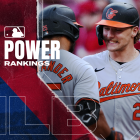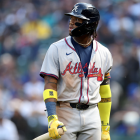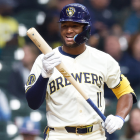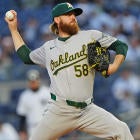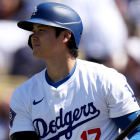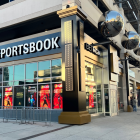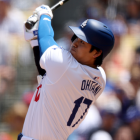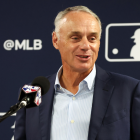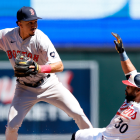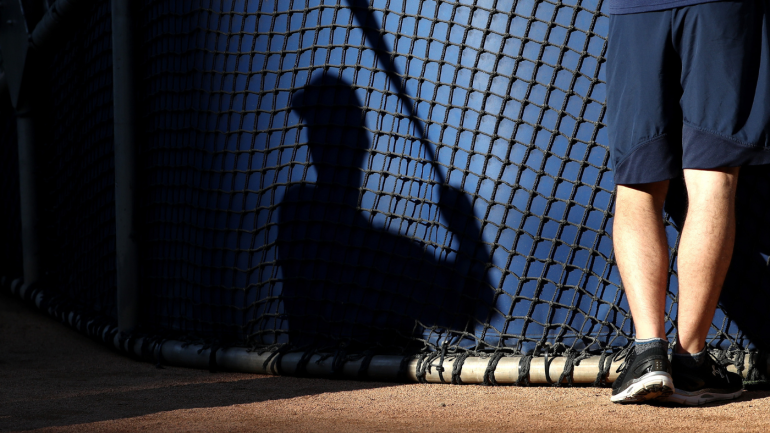
At 11:59 p.m. ET on Wednesday night, Major League Baseball's collective bargaining agreement expired. Minutes later, MLB owners announced a lockout of the players. It is baseball's first work stoppage since the 1994-95 players' strike, and there's no telling when it will end. With any luck, the work stoppage will end in time for spring training, though that may be optimistic.
Commissioner Rob Manfred held a press conference Thursday morning, noting the work stoppage was "bad for business" while saying he was optimistic the 2022 regular season would still start on time.
Over the last several days and weeks MLB and the MLB Players Association have traded proposals, some more realistic than others, and at the core of the labor battle is money. MLB is a $10 billion a year business and how that $10 billion is distributed is the single biggest sticking point. The work stoppage will end once MLB and the MLBPA figure out the money, and not a second sooner.
What does a lockout look like for the average fan? If past work stoppages and last year's return-to-play negotiations are any indication, there will be a lot of public sniping between the two sides, and we'll see it all in real time on social media. During the 1994-95 work stoppage, we all had to wait to see the next day's paper to get the latest news. Now we see it as it happens.
With a lockout seemingly inevitable following the expiration of the collective bargaining agreement Wednesday night, here's what you need to know about the work stoppage, and what actually happens during a lockout.
There is a transactions freeze
MLB is implementing a transactions freeze during the lockout, meaning no trades or free-agent signings (or waivers, releases, etc.) involving 40-man roster players (i.e. MLBPA members). Baseball's work stoppages haven't always featured a transactions freeze (the Mets traded Vince Coleman to the Royals for Kevin McReynolds during the 1994-95 strike) though it's believed we'll see one this offseason.
Because the lockout would only involve MLBPA members, we could see minor-league contract signings or even trades involving non-40-man roster players during the work stoppage. Those are rare, though they would be technically possible.
Players still get paid (kind of)
During the lockout players will receive any signing bonus or deferred salary payments, though they are not paid their base salary should the lockout extend into the regular season (players are only paid during the season). Here are some notable signing bonus payments due over the next few weeks:
- José Berríos, Blue Jays: Owed $2.5 million on both Jan. 31 and April 30
- Paul Goldschmidt and Miles Mikolas Cardinals: Owed $1 million each on Jan. 15
- Jason Heyward, Cubs: Owed $4 million on April 1
- Jurickson Profar, Padres: Owed $1.5M on Jan. 20
Max Scherzer's just completed contract with the Nationals included $105 million in deferred salary and the bill begins to come due in 2022. Washington owes him a $15 million on July 1 every year from 2022-28, so, even if the worst-case scenario plays out and the lockout extends into the summer, Scherzer will still receive his $15 million deferred salary payment next July 1.
The union can provide players with financial assistance during the lockout, though it would be far less than the player's contracted salary. Some players received $10,000 every two weeks during the 1994-95 strike, for example. The union can also provide players with zero interest loans in some cases, and will help cover health insurance costs should the lockout extend into the season.
No workouts at club facilities
This part is simple. During a lockout, the owners quite literally lock the players out of club facilities, meaning no workouts allowed (club organized or otherwise). If necessary, the MLBPA will run workout facilities in Arizona and Florida for players during the lockout, similar to the union's free agent camp in Florida during spring training in 2018.
It should be noted this means injured players can not rehab at the club's facilities or with the club's athletic trainers. Charlie Morton won't be allowed to rehab his broken leg with Braves trainers and pitchers like Zack Britton, Tyler Glasnow, Spencer Turnbull, Justin Verlander, and dozens of others will have to progress through their Tommy John surgery rehab away from the club.
"Really, most players' offseasons aren't going to change because of this," Morton told The Athletic's David O'Brien earlier this month. "But for me personally, if I can't go to an affiliated site to do rehab -- like if I can't go to (the Braves spring training site) to do my rehab -- that's not going to make it impossible to do my rehab, but I'm sure the Braves would like to have hands and eyes on me. That's the way it should be. But guys that work out and rehab at team facilities with team personnel. No one's really supposed to see us, so that's going to affect guys that do work out at a team facility with team personnel, or guys that are rehabbing."
Drug testing is considered unlikely
There is no definitive answer on this yet but it is considered unlikely MLB will be able to test players for banned substances during the lockout. For what it's worth, players were not drug tested during the most recent NFL and NHL lockouts. Under the collectively bargained joint drug agreement players are randomly tested for banned substances year-round, with additional tests possible when probable cause exists.
Players could play in other leagues
During the lockout players would be allowed to play in winter leagues, independent leagues, and even professional leagues overseas (Japan, Korea, etc.). There is precedent here, as many NHL players played overseas in Europe and Russia during the league's work stoppage from 2004-05. The MLBPA would fight any attempt by a team or MLB itself to block a player from playing in another league during the lockout.
The minor leagues should go on
Based on past precedent, it should be business as usual for the minor leagues during the lockout. The notable exception is players on the 40-man roster (i.e. MLBPA members) will be expected to stand with their union brethren and not play for an MLB affiliated minor-league team during the lockout. Non-40-man roster players are free to play in the minors, however, and they will not be seen as crossing the picket line like MLB's replacement players during the 1994-95 strike.
The 2022 minor-league season is scheduled to begin April 8, and if the lockout extends to the point where minor-league games are being played but MLB games are not, we could see nationally broadcast minor-league games, similar to ESPN showing Korean Baseball Organization games during the pandemic shutdown last year. Some notable minor leaguers not on their organization's 40-man roster include Orioles catcher Adley Rutschman, Royals shortstop Bobby Witt Jr., and Tigers outfielder Riley Greene.














